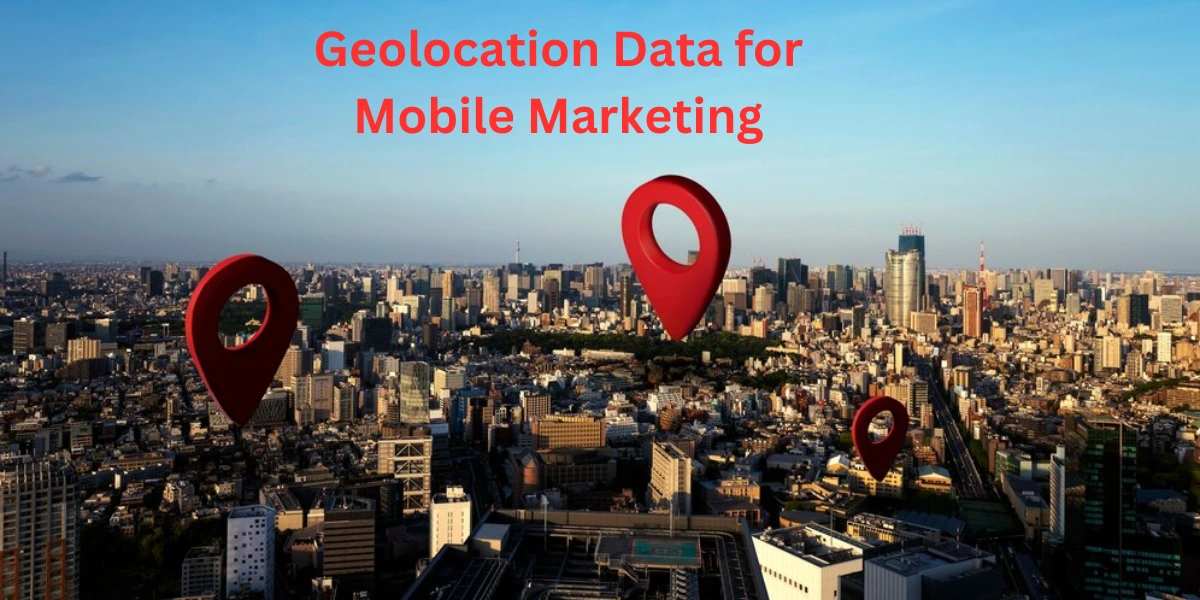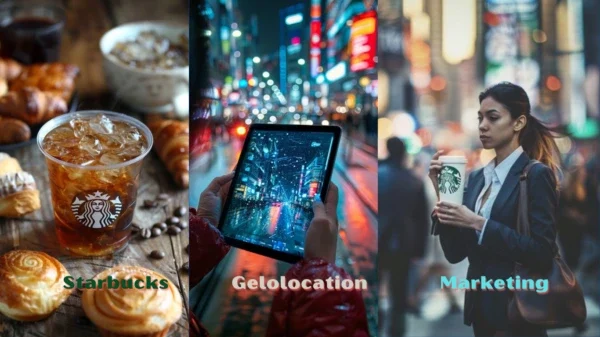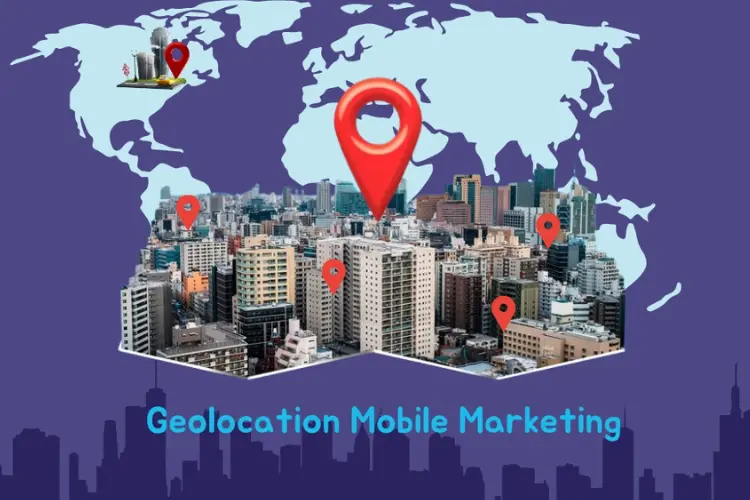Geolocation Data for Mobile Marketing: A Comprehensive Guide for Effective Targeting

One of the most impactful tools available to marketers today is geolocation data for mobile marketing. This allows brands to engage users based on their real-time location, offering targeted, relevant messages that can significantly enhance user experience and drive conversions. In this article, we explore the importance of geolocation data, provide a step-by-step guide for its implementation, and discuss best practices for optimizing its use in mobile marketing campaigns.
Table of Contents
1. What is Geolocation Data?
Geolocation data for mobile marketing refers to the information that reveals the geographical location of a user’s device in real time. It is typically collected through various technologies such as GPS, Wi-Fi signals, cell towers, and Bluetooth beacons. Marketers can use this data to create location-based marketing campaigns that deliver personalized messages to users when they are in a specific geographic area.
For example, a restaurant can send a push notification offering a lunchtime discount to users in the vicinity, or a retail store can offer personalized promotions to nearby shoppers. This kind of location-based targeting allows businesses to interact with potential customers in a timely and relevant manner, making their marketing efforts more effective.
2. Why Geolocation Data for Mobile Marketing is Crucial ?

Geolocation data enables brands to leverage users’ real-world movements to drive digital engagement. Here are several reasons why it is essential for mobile marketing:
- Increased Personalization
Personalization is key to modern marketing, and geolocation data for mobile marketing allows for a more tailored experience. Brands can send highly relevant content and offers based on where users are at the moment, resulting in better engagement and customer satisfaction. For instance, an event organizer can use geolocation data to send out reminders or special promotions to attendees as they approach the venue. - Boosted Engagement and Conversions
Timely and relevant marketing messages can dramatically increase engagement. Geolocation data enables businesses to reach users when they are most likely to respond. When users receive messages that are directly related to their immediate surroundings—such as a discount at a nearby store—they are more likely to act on the offer, leading to higher conversion rates. - Cost-Effective Advertising
Geolocation-based marketing ensures that your ad budget is spent wisely by focusing on users who are most likely to convert. Instead of casting a wide net with broad, untargeted ads, businesses can use geolocation data to send messages only to those in proximity to their physical locations, thereby optimizing marketing spend and improving ROI. - Enhanced Customer Loyalty
Offering location-specific promotions and personalized experiences helps build customer loyalty. Geolocation data can be used to offer rewards to users who frequent a specific location, enhancing their sense of connection with the brand.
3. How Does Geolocation Work in Mobile Marketing?
Geolocation data for mobile marketing can be collected through several different technologies, each with its own strengths and use cases:
- GPS (Global Positioning System): GPS uses satellite signals to determine the exact position of a user’s device. It is highly accurate and works best for outdoor locations.
- Wi-Fi: Wi-Fi provides more precise location data indoors by identifying the nearest Wi-Fi networks that a device is connected to. This technology is commonly used in shopping malls, airports, and restaurants.
- Bluetooth Beacons: Beacons are small devices that communicate with nearby smartphones via Bluetooth. They are used for proximity marketing in small, confined spaces, such as retail stores, where brands can send hyper-localized offers when users approach a specific product or area.
- Cell Towers: This method uses the location of nearby cell towers to estimate a user’s general location. Although it is less accurate than GPS, it can provide broad location data in areas where GPS signals may be weak.
Each of these technologies can be leveraged based on your campaign goals, offering various degrees of location accuracy depending on the user’s environment.
4. Step-by-Step Guide to Using Geolocation Data for Mobile Marketing

4.1 Choose the Right Technology
Selecting the appropriate geolocation technology depends on your marketing needs. For outdoor tracking, GPS is the most accurate solution, while Wi-Fi and Bluetooth beacons work best indoors. Understanding where your target audience will be and what level of accuracy you require will help you make the best choice.
4.2 Ensure Compliance with Privacy Laws
Before collecting location data, ensure you comply with relevant privacy laws such as GDPR or CCPA. Transparency is key—users should know exactly how their data will be used and should opt-in to share their location. Failing to respect privacy concerns can lead to distrust and reduced customer engagement.
4.3 Integrate Geolocation API
To begin collecting geolocation data, you’ll need to integrate a geolocation API, such as Google Maps API or Mapbox, into your mobile app. These APIs allow for real-time location tracking and make it easier to trigger location-based notifications.
4.4 Set Up Geofencing
Geofencing is a powerful tool for location-based marketing. It allows businesses to create virtual perimeters around a geographic area, triggering an action when a user enters or exits the boundary. For example, a coffee shop can set up a geofence around its location and send an offer to nearby customers during peak hours.
4.5 Craft Location-Based Offers
The content of your marketing messages should be relevant to the user’s location. Use local events, nearby attractions, and seasonal trends to make your campaigns more engaging. For example, a retail store could send a notification about an ongoing sale when users are near the location, enticing them to visit.
4.6 Monitor Campaign Performance
Once your geolocation campaigns are running, it’s essential to track their performance. Metrics such as click-through rates, engagement rates, and conversions should be analyzed to determine which strategies are working. You can use this data to fine-tune your campaigns and increase their effectiveness.
4.7 Refine Your Strategy
Based on the data you collect, continually refine your geolocation marketing strategy. Experiment with different geofencing radii, notification timings, and offers to determine what resonates best with your audience.
5. Best Practices for Geolocation Data for Mobile Marketing
To maximize the impact of geolocation data for mobile marketing efforts, follow these best practices:
- Provide Value with Every Interaction
Location-based marketing should always offer something valuable to the user, whether it’s a discount, exclusive content, or helpful information. Sending irrelevant or frequent notifications can lead to users disabling location-sharing features or uninstalling your app. - Respect User Privacy
Transparency about how geolocation data is used is crucial to maintaining trust. Always ask for permission before tracking users’ locations and provide options for users to easily manage their preferences. - Don’t Overwhelm Users
While location-based notifications are effective, sending too many can overwhelm users. It’s essential to find a balance between offering timely and relevant information and respecting users’ preferences for fewer interruptions.Image suggestion: A mobile user receiving a well-timed push notification related to their current location.
6. Real-World Examples of Geolocation Data for Mobile Marketing
- Starbucks : Starbucks has effectively used geolocation data to send notifications about special offers when customers are near one of their stores. This strategy has been successful in increasing both foot traffic and customer engagement.
- Uber :Uber uses geolocation data to match riders with nearby drivers in real-time. It also offers location-based promotions during specific times, such as discounts for rides during off-peak hours.
- Walgreens : Walgreens uses geofencing to send in-store promotions to customers who have their app installed. When customers enter a store, they receive notifications about current deals or personalized offers.
7. Updated Market Figures
- According to a recent report by Statista, global spending on location-targeted mobile ads is expected to reach $38 billion by 2025, up from $31 billion in 2020.
- Companies using geolocation marketing see an average of 20% higher engagement rates compared to traditional marketing methods.

8. Conclusion
Geolocation data for mobile marketing has the potential to transform how brands interact with customers, providing timely, personalized, and relevant experiences that drive engagement and conversions. By following best practices—ensuring user privacy, offering valuable content, and monitoring campaign performance—businesses can harness the power of geolocation to optimize their marketing efforts and boost ROI. With the continued growth of mobile device usage, geolocation data for will remain a critical tool in modern marketing strategies.




3 Comments
Comments are closed.